By the time I was in the 4th grade, I had been to nine different schools in five different states. Navigating the waters of making new friends, finding new people to sit with at lunch, and trusting and opening myself up to new sets of teachers was not easy for me. I was the self proclaimed new girl in every respect. As a result, I became very attached to permanency. My safe, reliable comfort zone was like that old pair of sneakers chock full of holes-you know the ones I’m talking about. The ones where your big toe peeks out the top and you know deep within it’s time to send them on their way, and replace them with new and better shoes. Ones where the sole doesn’t “talk” and trip you at every given step. So much change at such a young age left me clinging to the familiar. New=scary. And I had had my fair share of new.
My parents knew something I didn’t though. They knew that sometimes, life calls for a change of scenery. Or two. Or more. We packed our bags for the last time, and in 1981 at the age of 9 years old, made my way to the State of Hawaii with my family. We had to chisel all of our personal belongings down to one duffel bag each, and thus began another new adventure. My mom had never been to Hawaii, but she had a friend who said we could stay with them while getting settled in. Nothing about it was safe or comfortable. In fact the whole plan reeked of uncertainty-the great big,scary unknown. I wasn’t ready for the change. But, in good faith, following my parents on our final grand move, we arrived in the land of Aloha, with little more than the shirts on our backs.
In many ways these early childhood escapades made me strong. I had to be. They also made me a nervous worrier. Could I make changes and have things still be OK? Where was my trusty old pair of sneakers when I needed them most?
This weeks reading and #IMMOOC really emphasized the notion of change and how it is mandatory as educators to keep growing and shifting our thinking on behalf of what is best for kids. Perhaps this is what my parents, with their infinite wisdom were trying to share with us as kids. When you most feel like settling in to the old and comfortable, that is when you need to pack it up and head for new ground. Innovator’s keep moving forward. As George Couros states in the Innovator’s Mindset, ” …growth can no longer be an option” (2015). In order for school to keep moving forward, it is on all of our shoulders to make a shift in our current mindset and resist stagnation in our thinking. The status quo is no longer enough. We have to look through the lens of meeting the needs of individual students in terms of what is best for them and not fall into our teacher version of that old pair of sneakers, pulling worksheets and lessons from the filing cabinet that are no longer serving our students today (Couros, 2015).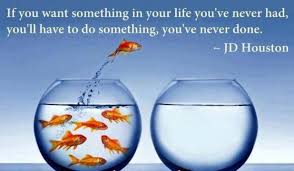
The Innovator’s Mindset is defined as “…the belief that the abilities, intelligence, and talents are developed so that they lead to the creation of new and better ideas,” (Couros, 2015). In addition, the end product should be to create something new and better. I couldn’t help, on my run this morning, but take into account innovation in the real world. I ran by the electric car charging station next to the gas station, the gentleman who owns his own business reupholstering furniture- taking an old piece and adapting it, changing it and improving it in his own iteration of the piece. I made my way past the small coffee shop who added a drive through window to improve business for their customers who no longer need to get out of their cars to get that morning cup of joe. I crossed the street where, on particularly dangerous crosswalks with no lights, bright yellow flags are provided to hold while you walk and cross. You take one from one side of the street and leave it on the other once you’ve crossed. Granted, it’s not the new, electronic count-down type of technology, but the purpose was quite appropriate in a pinch to better the environment in the name of safety. Everywhere you look, the world is innovating, changing and adapting to new and better ways of doing things. Wouldn’t it suffice to say that schools need to do the same in an effort to meet the needs of students today? By considering “…what’s best for each learner, we must also think about how what we’re teaching will impact his or her future,” (Couros, 2015).
I was having an interesting conversation with my 23 year old son, who is a product of the public school system, regarding innovation and the notion that change is needed in schools today. He said, “School in general is very uninteresting. It doesn’t grasp your attention. Then you are graded on being able to remember what didn’t grasp your attention in the first place,” (Var, 2016). For Zachary, school was just plain boring. He is a super smart kid, naturally inclined to math and could figure the tip at the table when dining out at an early age, when adults were fumbling to come up with a number. He started playing drums at the age of one and a half, and naturally just taught himself. But the school system never seemed to serve him at his level. He was being made to think inside someone else’s box- someone else’s version of what school should look like. He made it through but it wasn’t the experience it could have been for him if more emphasis would have been placed on “…what’s relevant to today’s educational needs,” (Couros, 2015). We’ve all been there. I know I have and that is why I’m so intent on learning, and growing, pushing my own mindset beyond what was always done and moving into “What is best for this learner?”-for all learners (Couros, 2015).
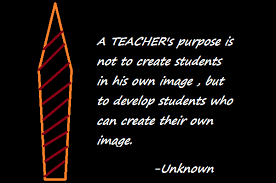
I will never forget my son’s 8th grade science class. His teacher had called to tell me that a worksheet on the Continental Drift Theory was not turned in, and that Zach was border line failing the class (I’m sure it was not due to that worksheet alone). I was able to secure another sheet and sat with Zach, painstakingly guiding him along to completion, the whole time knowing that the experience was both unmotivating and well, tedious. But it had to get done. After we had battled it out to the finish, I insisted he get organized and turn his life around, starting with cleaning out his backpack, which I’m pretty sure had biohazard material along with a thousand crumpled pieces of paper clumped together in their very own science snowball experiment. In the process, I found the SAME worksheet, completed mind you, 2 more times. Yes, if you are counting that is right. Zachary finished the same worksheet, 3 different times and didn’t remember. I recall asking him, “HOW can you not remember you did this before? Didn’t it look a little familiar to you?” He had no connection to the assignment, no pride in getting it done and turning it in. It was a sad day for me as a mom and an educator. I asked Zachary another question, after we had a good laugh about the worksheet escapade, (which consequently he DID remember), if school would have been a place where you wanted to be and were able to really learn and grow, what would it have looked like for you? What would you have wished for? His answer was spot on. Out of the mouth of babes. He proceeded to elaborately explain music time signatures and mathematically modeling drum beats for drum fills. George Couros, in this week’s #IMMOOC event 2 states that kids need to be able to take their knowledge and do something with it- it’s not just to be “good at math” it’s being “good at doing something with the math they learned” (2016). In this respect, Zach wanted to DO something meaningful with the math he learned. He expressed how he wished he could have developed and created different kinds of drums using various woods and metals. “Did you know, Mom, why certain woods create different frequencies and why certain metals have certain characteristics? Maple has a deeper tone, so a lower tone, where as birch has a higher tone. Metals have subtle differences, but they all differ. Brass has a higher pitch and more of a ring to it.” He wished he could have used geometry to make his own drums, which would require precisely measuring placements for lugs on drums when drilling his own, because there is a 35 degree bearing edge to cut, so you need understanding of triangles. He said he wanted to write song lyrics, because poetry is really just music waiting for its own melody. He wanted to study the origins of grips or the way to hold sticks. Drum heads were made once made of leather and calf skin so drum sticks were held differently when marching for war using a traditional grip. I asked him how he learned all this? He said, “Doing research, You Tube, following people on Instagram and taking “online” drum classes” (2016). The excitement in his eyes while describing his passion was undeniable. And yes, Zach was in the high school band. For a while. But even though he could play an amazing set of drums before he could sit down and still reach the pedals, he got assigned the triangle, because he didn’t read music. This discussion with my son really emphasized all that we know we need with regard to change and leaving the comfort zone of current education. Students need to be able to experience their very own deep learning, and by “tapping into their interests, [we can work to] craft innovative learning experiences” for them (Couros, 2015).
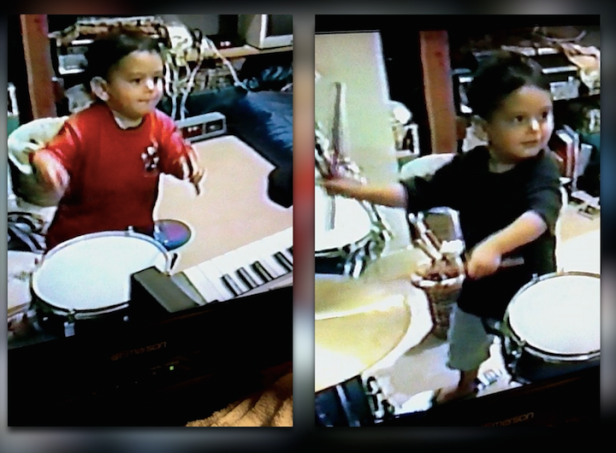
These conversations are imperative to have, because “…looking back is crucial to moving forward,” (Couros, 2016). In John Spencer’s blog post, The Future Belongs to the Makers, he eloquently speaks of a project he took part in, as a young adolescent. Despite insecurities and uncertainty, he was pushed by his teachers to share his work, with the encouragement that “What you say matters. And when you choose to stay silent, you rob the world of your creativity.” He further explains that “It’s about the teachers, the relationships, and the power of equipping students to become creative thinkers, ” (Spencer, 2016). As teachers we need to give kids the power of their own voice and choice and then step back and allow them to “learn how to learn” by being a “guide on the side”, supporting, encouraging and nurturing them along the way (Couros, 2015). We cannot let the flapping sole of our old, comfortable shoes trip us up on the way to something new and better.
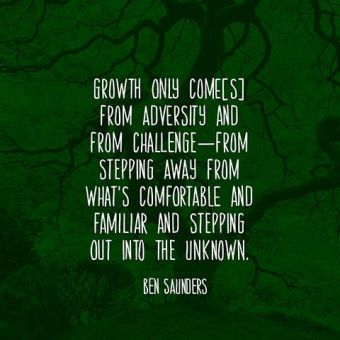
Moving is not always the scary thing we make it out to be. Granted as a young child, I begged to differ. I didn’t realize that my parents were trying to create the best life possible for our family and with that came change. Making this shift is never easy, but the ultimate satisfaction comes when we step outside the boundaries of our own comfort zone for true change to manifest. This “willingness to try something new”means having the courage to ask ourselves one key question: “Would you want to be a learner in your own classroom?” This got me thinking. I’ve always been about student-centered learning, and encouraging kids to ask the questions and find the answers, to excite them about learning. But where I know I need to slip off my trusty, hole-filled tennis shoes and slip on some new kicks is with regard to using technology and rethinking my teaching to integrate new and better ways of doing things. To be reaffirmed in the understanding that, “Innovation is not about changing everything; sometimes you only need to change one thing,” (Couros, 2016). It’s that simple understanding that change begins by looking at things differently.
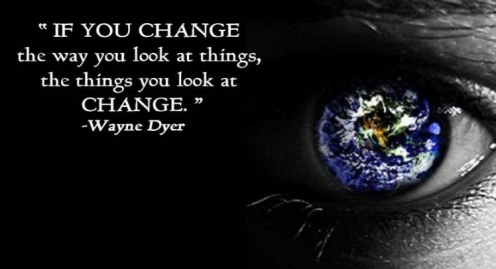
In my pursuit to grow and adapt an Innovator’s Mindset, the biggest stepping stone to success for me is the notion that innovation doesn’t have to be something grand- a new program or something that costs money to implement. Rather, as Dr. Katie Martin suggests, it’s those “opportunities to think about what exists and how to move to that next level,” (2016). What can I do to make a change for what’s better for my students–To allow them to create and be inspired. To want to be in my classroom. “Is there a better way?” The answer is most definitely yes. It’s time to move beyond “The way we have always done it,” (Couros, 2015). Moving, changing and taking risks can be scary. But, as we have learned, “Change is an opportunity to do something amazing”– Time to toss the old, safe pair of shoes, don some new ones and get moving!
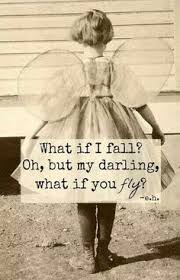


I’m struggling to articulate this but … something about your post and a comment George made in the Hangout is connecting in my head … about what we do when we are “innovating” but the students don’t want to or are not ready to innovate. (This is not about you … just the connection to anxiety of new .. like your family moving …).
So, if we have students who are perfectly happy where they are with learning and not ready to try to something new (for whatever reason … including the amazing prowess of a teacher), the challenge for teachers seeking innovative practice is not just the pedagogy of the learning but also in helping all students understand the rationale and take steps forward.
I’m just thinking out loud again about the nature of meeting all kids where they are — we often think of this as helping the kids at the top rung take a leap forward or the bottom moving forward a few steps but sometimes it is those kids smack dab in the middle who need our help the most .. and who can make the most strides forward with the right innovative idea.
Sorry for the ramble … thanks for sparking my thinking …
Kevin
LikeLike
Aloha Amy,
While I did not move as many times as you did, I can relate to the move to the Aloha State and conversations with my four, now adult daughters. Thank you for sharing the illuminating conversation and experience that you had with your son Zach. You are spot on when you say that having these conversations is imperative, and is supported by the quotes from both George Couros and John Spencer.
I enjoyed reading your post and appreciate your candor about “slipping on some new kicks” and understanding what you can do to bring about change for your students. You reaffirm for all those who read this post, that “Innovation is not about changing everything; sometimes you only need to change one thing,” (Couros, 2016).
Mahalo,
Nathan
LikeLike